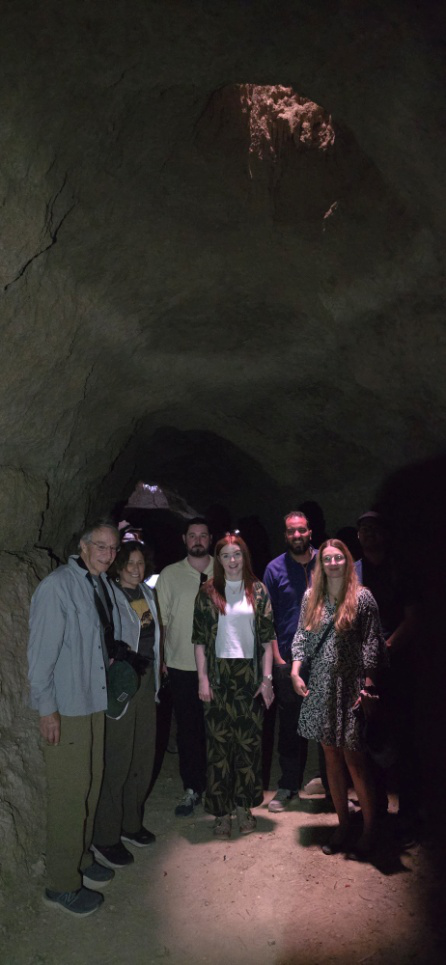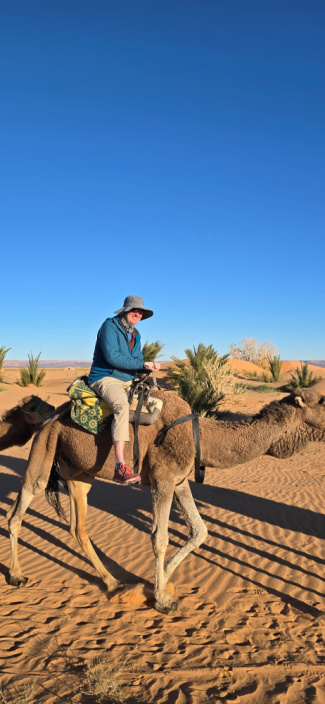You know that moment in Indiana Jones when he steps out of the dusty alley and into a secret courtyard? That’s what it feels like to walk through a Moroccan medina, but what if, just a few days later, you swap the winding souks for silent ridgelines in the High Atlas? That’s Morocco. A country where you can sip mint tea in a centuries-old courtyard one day and summit North Africa’s highest peak the next.
In this guide, we’re breaking down how to balance your cultural must-sees with an unforgettable trek in Morocco. Whether you’re into bustling markets, quiet trails, or both, here’s how to make your time count.
First Things First: Start in Marrakech
Marrakech is the perfect base if you’re looking to combine culture and trekking. It’s vibrant, full of history, and only a short drive to the Atlas Mountains.
Spend your first couple of days soaking up the city. Visit Jemaa el-Fnaa for street food and performers, get your bearings in the medina, and don’t skip the Jardin Majorelle or a rooftop dinner overlooking the Koutoubia Mosque. These cultural anchors help ground your Moroccan trip in a sense of place before you head for the hills.
Pro Tip: Want a smoother transition? Book one of the many day trips from Marrakech to mountain villages like Imlil or Ouirgane. These short escapes are a great way to test your hiking legs while still sleeping in a city bed.
Choosing the Right Trek
Morocco has treks for all fitness levels, from mellow village-to-village walks to strenuous climbs like the Mount Toubkal trek. If it’s your first time trekking in the region, don’t worry, you don’t have to summit a peak to feel like you’ve accomplished something incredible.
We recommend spending 2 to 5 days trekking in the Atlas Mountains. That gives you enough time to connect with Berber villages, hike through walnut groves, and sleep in simple but comfortable gîtes or mountain lodges.
Fun Fact: Mount Toubkal stands at 4,167 meters (13,671 ft) and is the highest peak in North Africa. Yet it requires no technical climbing skills.
Pack Smart: From Medina Streets to Mountain Trails
When you split your trip between city and trail, your packing list needs to multitask.
- In the city:breathable clothing, something modest (especially for women), and comfortable shoes for cobbled medina streets.
- On the trail:hiking boots, a warm layer (yes, even in summer), sun protection, and a small daypack. Most Morocco group tours that include trekking offer mules to carry heavier gear, so you can hike light.
Pro Tip: Leave room in your bag for artisanal souvenirs. Wool blankets, pottery, and handwoven bags are worth the suitcase space.
Why Guided Tours Make the Difference
If you’re trying to balance city exploration and trekking, a good guide helps bring it all together. Local guides not only lead the way on the trail but also connect you with hidden tea houses, family-run guesthouses, and spots you’d probably miss otherwise.
Morocco guided tours often bundle cultural stops with trekking routes. For instance, some itineraries include guided medina tours before heading into the mountains so you’re not missing either side of the experience.
The Cultural Moments You Shouldn’t Skip
To truly balance your trip, include moments that slow you down. A hammam visit after a few days of hiking is pure magic. Sharing a home-cooked meal in a Berber village? Even better. These moments stick with you long after you’ve left Morocco.
Other culture-rich experiences worth planning around:
- Cooking classes in Marrakech
- Henna art with local women
- Visiting Amazigh (Berber) cooperatives for rugs and argan oil
- Desert camps (if you have time to tack on a trip to the Sahara)
Timing Matters
The best time for a trek in Morocco is March through June and September through November. Summer can be sweltering in the cities and tough on the trail, especially at lower altitudes.
Spring offers green valleys and blooming wildflowers, while fall brings clear skies and comfortable temperatures.
How to Plan Your Days
If you’re short on time, go for a 7-10 day itinerary:
- Days 1–2:Land in Marrakech, city tours, food, and hammams
- Day 3:Day trip to Imlil or Ouirgane
- Days 4–6:Multi-day Mount Toubkal trek or moderate hike in the Azzaden Valley
- Days 7–8:Return to Marrakech, final shopping, rooftop dinner
Got more time? Add a desert extension or coastal break in Essaouira.
What About Solo Travelers?
If you’re going solo, Morocco group tours are a fantastic way to meet others without compromising your independence. Look for group departures focused on hiking, with max group sizes under 12 for a more personal feel. The mix of city time and mountain challenge tends to attract curious, like-minded travelers.
Tips for Staying Energized on a Dual-Focus Trip
Balancing cultural touring and mountain trekking in the same trip is thrilling but it can also be physically demanding. We recommend planning at least one full rest day between your time in the city and your trek in Morocco. Use that day to relax at your riad, stroll to a nearby café, or enjoy a light hammam session. Pacing yourself will help you get more out of both experiences.
Hydration, light snacks like dates or nuts, and stretching in the morning can also keep your energy up. You don’t need to train like a marathoner, but staying mindful of your body will make a huge difference.
Omar Adventures: Culture + Altitude = Your Perfect Morocco Trip
Want the best of both worlds? Omar Adventures offers custom and small group trips that blend Morocco’s cultural hotspots with unforgettable mountain treks. Whether you’re looking for a guided Mount Toubkal trek, multi-day trekking in the Atlas Mountains, or curated day trips from Marrakech, we’ll make sure every step and every stop is worth it.
Let’s plan your dream Morocco itinerary.
Book your tour with Omar Adventures today—and experience Morocco from medina to mountain.






